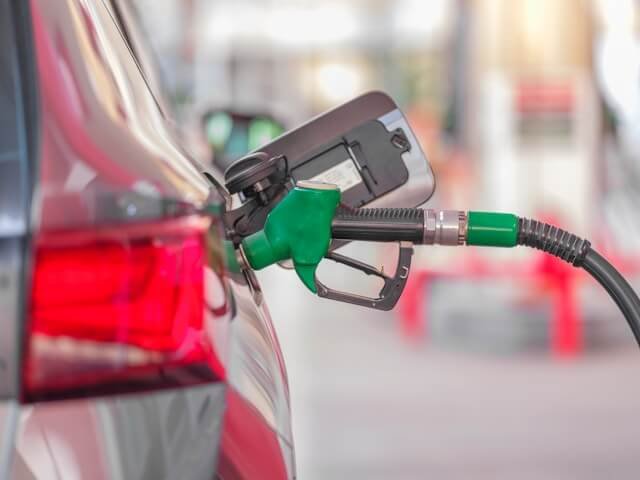Understanding how petrol pricing works and what drives changes is crucial for motorists. With global oil prices fluctuating and the rand’s value shifting, forecasts suggest possible price cuts at the pump. In this article, we’ll look at current figures, projections, and the mechanics behind fuel pricing in South Africa.
What Is Petrol Pricing in South Africa?
Petrol prices in South Africa are made up of several components: the basic fuel cost (wholesale), import or refinery margins, transport costs, taxes, and distribution/retail margins.
The Central Energy Fund (CEF) and the Department of Mineral Resources and Energy (DMRE) publish monthly adjustments based on global oil markets (e.g. Brent crude), exchange rates, and local conditions. cefgroup.co.za+2Mineral Resources & Energy+2
For example, as of recent pricing, the cost for 95 ULP (Unleaded Petrol) along coastal regions is around R20.84 per litre, and in Gauteng around R21.63 per litre. You’ll also find 93 ULP priced at R21.48 per litre. (As per the data you provided.)
Other sources list slightly different numbers: for instance, Caltex’s latest fuel pricing shows 95 ULP inland at R21.55 and coastal around R20.72. Caltex South Africa The AA also lists 93 ULP at around R21.47 in its recent updates. AA South Africa
It’s normal to see these small discrepancies between sources due to regional distribution costs, timing, and varying markups.
How Do Petrol Prices Change?
The price you pay results from multiple moving parts. Key factors include:
- Global oil prices: Brent crude currently trades below USD 65 per barrel, which helps drive down the fuel base cost.
- Exchange rate / rand strength: A stronger rand lowers import costs. Recently, the rand has hovered around R17.21 to USD levels.
- Import/refinery margins & supply chain costs: Shipping, refining, storage, and transport all add to the final pump price.
- Taxes & levies: The government imposes fuel taxes, which are part of the regulated portion of pricing.
- Monthly adjustments: The DMRE and CEF recalculate each month to reflect changes in the above variables.
Because these components fluctuate, projected price cuts or increases depend on how global conditions evolve.
Projected Petrol Price Cuts & Trends
Recent data and forecasts suggest some relief ahead for motorists:
- The CEF anticipates possible reductions of ≈ 48 cents for 95 ULP and ≈ 51 cents for 93 ULP, if conditions stay favorable.
- Diesel may see modest cuts of about 10 cents per litre.
- If trends continue, deeper cuts could be seen: up to 70 cents for petrol and around 30 cents for diesel.
These projections assume continued drops in crude oil prices and a firm rand, which would reduce import costs and ease retail margins.
In 2025, petrol prices have remained relatively stable. For instance, the AA lists 93 ULP at R21.47 (as of recent months) AA South Africa, and regional fuel directories show similar values across various provinces. fueldirectory.co.za
In October 2025, for example, adjustments were modest: 93 ULP saw no change, while 95 ULP increased by 8 cents per litre. Diesel 0.05% saw a 10-cent decrease. TopAuto+1
Thus, any substantial cuts would be welcome for motorists powering through Durban, Cape Town, or inland routes.
Why Petrol Prices Matter to Motorists
Petrol cost isn’t just about fill-ups — it influences broader costs:
- Running costs: Regular commuting or business traveling becomes more expensive with higher fuel prices.
- Vehicle selection decisions: Many drivers consider switching to hybrid or electric options if petrol becomes too volatile.
- Related maintenance: As petrol prices rise, drivers may stretch maintenance cycles — which can be risky.
Tips for Drivers to Save on Fuel Costs
While waiting for official cuts, here are practical ways to minimize petrol costs:
- Drive efficiently: Avoid rapid acceleration or heavy braking.
- Maintain proper tyre pressure: Underinflated tyres increase fuel consumption.
- Service regularly: Clean air filters, proper oil (5W-30), and well-maintained components reduce inefficiency.
- Plan routes: Combine errands to reduce distance traveled.
- Monitor fuel price updates: Track DMRE or AA releases to fill up when prices drop.
Conclusion: What to Expect and What You Can Do
Petrol prices in South Africa are tightly linked to global oil markets, currency strength, and local distribution costs. Recent trends suggest potential cuts — possibly 48 to 70 cents per litre for petrol — depending on how the rand and crude oil evolve. Diesel may see smaller declines.
While these changes could bring welcome relief, motorists should also stay savvy: maintain your vehicles well, drive smart, and track monthly fuel announcements from the DMRE / CEF.
Looking for parts to help your car run more efficiently and save on fuel?
Explore quality parts and accessories at car-parts.co.za today.


Leave a Reply